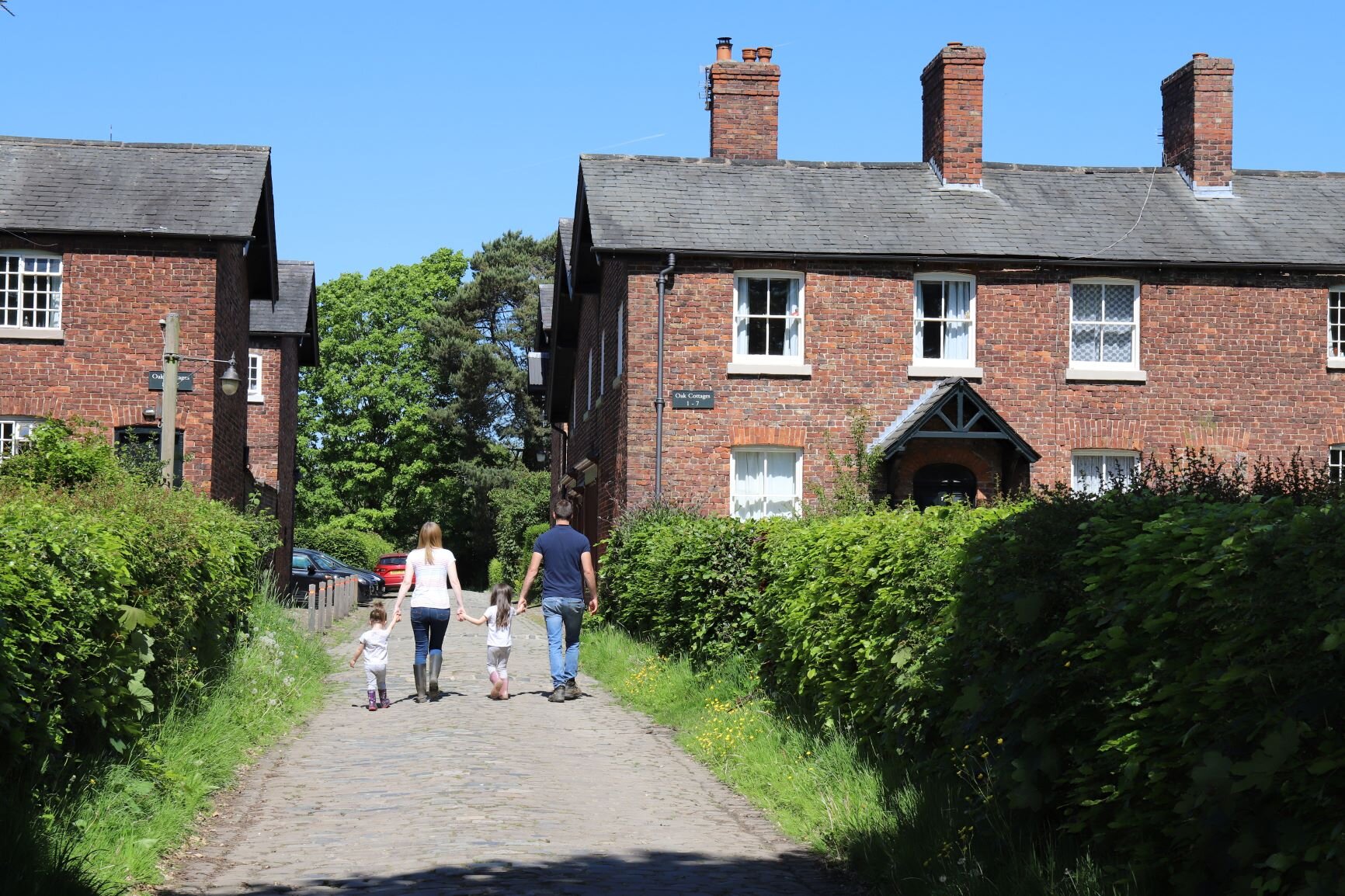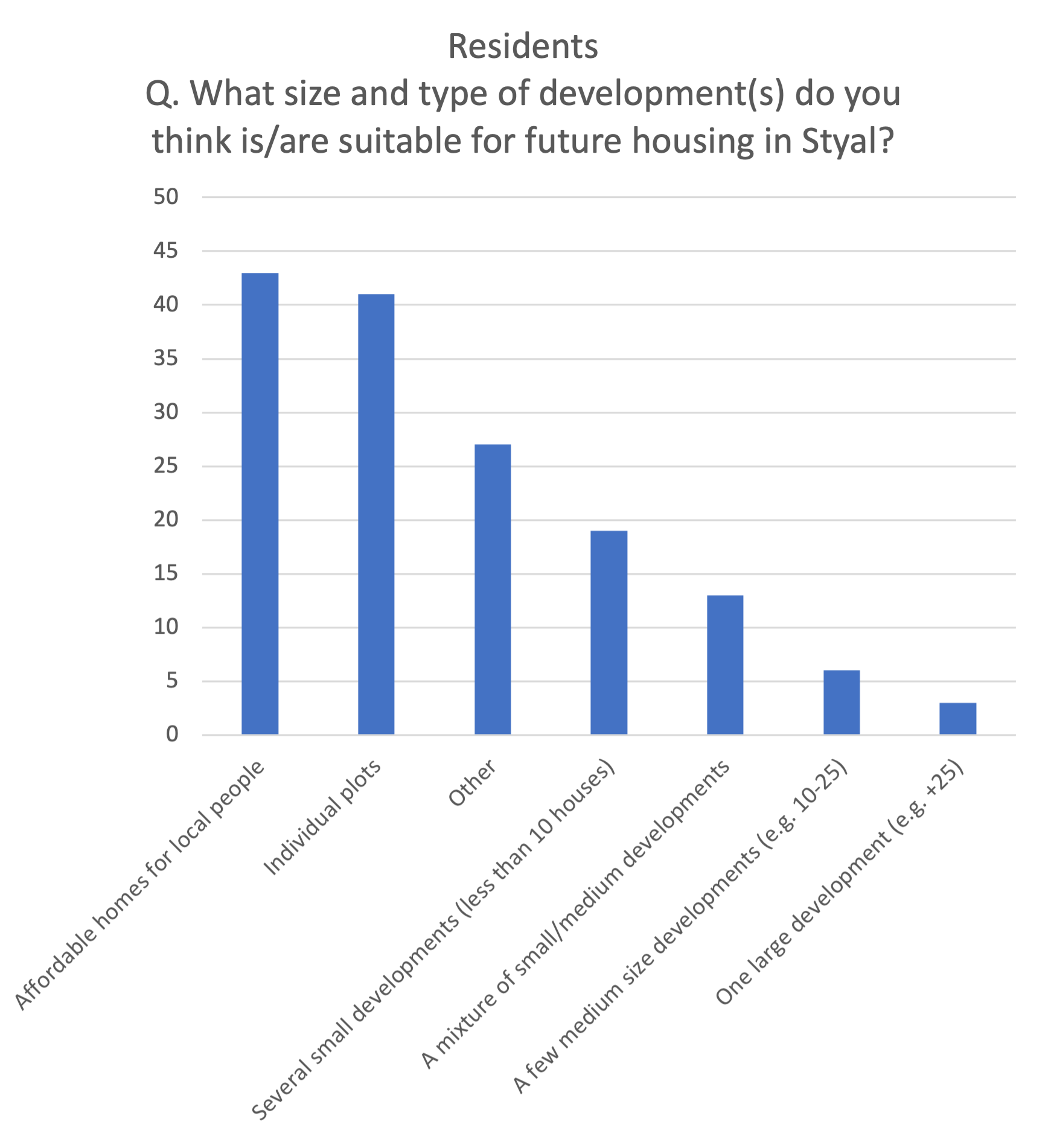
Survey
Survey Results
We have surveyed residents, businesses and visitors of Styal to identify the biggest priorities for future planning and development within the village.
Around 20% of Styal’s residents took part in the survey, with the submission of 103 responses. We also gathered responses from 69 non-residents, including National Trust volunteers, recreational visitors, and people who travel into the village for work.
Best and worst things
We asked respondents to tell us what three things they like most about the village, and what three things they like the least. We categorised the responses to get a clear picture.
Both residents and non-residents told us they value Styal’s natural green spaces and rural setting. Residents said they like Styal’s sense of community and location, and non-residents said they enjoy Styal’s ‘village feel’, heritage, nature, and recreational aspects.
There was also consensus on what respondents’ dislike about the village.
58% of residents and 39% of non-residents said Parking is a problem. 53% of residents complained about traffic and speeding.
26% had issues with village amenities, from lack of provision for children, to limited shopping options. Complaints about lack of public transport also featured.
Quality of life
Over 80% of residents said open and green space and local wildlife and habitats are extremely important to quality of life in the village. 78% said a rural atmosphere is extremely important.
When asked specifically about traffic and parking, 83% of residents think traffic is a serious or very serious problem and 72% said parking is a problem. These questions prompted many additional comments demonstrating strength of feeling on the subject.
Non-residents gave a similar response. 62% think traffic in Styal is a problem and 80% said parking is an issue.
Development and housing
We asked respondents about land allocation and, if there were to be any development, what kind of developments they would like to see in the village.
The majority of residents said they want more restrictions on development in the village, and 78% said they strongly agree that the current look and feel of Styal is maintained.
50% of villagers prefer that land is not allocated to business use.
Non-residents gave a similar response. 62% think traffic in Styal is a problem and 80% said parking is an issue.
We asked villagers what sort of housing they expect to require by 2030.
58% said they will require a 3–4-bedroom house. 18% said a 1–2-bedroom house, and 18% said eco-friendly housing.
18% of villagers said their current housing will not be suitable in 2030.
When villagers were asked what size and type of developments would make suitable future housing in Styal, the most popular choices were individual plots, with 42% selecting this option, and affordable homes for local people, with 41%.
Only a small number of respondents thought medium size developments or single large developments such as flat blocks would be suitable for the village.
When considering what can be done to ensure homes are affordable in the village, land allocation for starter homes was listed as the highest priority.
What do the results mean for the Neighbourhood Plan?
Neighbourhood Plans are used to direct building and infrastructure development within a local area. Cheshire East will consult Styal’s Neighbourhood Plan to inform development of any new homes, shops and offices in Styal, influencing how planning permission is granted.
Conducting a survey is an important part of developing our Neighbourhood Plan because its policies should represent the views of Styal’s residents and users.
Our survey results have identified the following priorities that we will use to inform policy making:
Maintaining village aesthetics and heritage with favouring of tightened restrictions to enable this
Protection of green areas, natural habitats and surrounding countryside
Protection of existing National Trust sites
Limitations on residential development, prioritising individual plots and starter homes over other types of development
Limitations on commercial development, with preference to restaurants, shops, and tourism businesses, rather than factories or manufacturing units
Careful consideration of traffic and parking implications regarding any new development
Careful consideration of potential air and noise pollution caused by any proposed development
Supporting provision for families and children when considering new developments
Respondents also highlighted several other important priorities that fall outside the scope of the Neighbourhood Plan:
Speeding issues, particularly on Hollin Lane and Altrincham road
Improving road and footpath conditions
Improving public transport
Dog fouling
Harmonising the relationship between residents and visitors
The full findings of the survey have been shared with Styal Parish Council so that all priorities can be taken into consideration.
The full survey results can be found here.
What’s next?
The Neighbourhood Plan Steering Group will conduct further meetings with the aim of setting a vision and guiding policies.
The Group will work with a planning consultant to create a draft plan that will be shared with local residents. Residents will then be given the opportunity to approve the plan via a referendum.
Further communication concerning development of the Neighbourhood Plan will be issued via a range of channels, ensuring villagers can follow progress and participate when required. You can keep up to date by signing up to the Neighbourhood Plan mailing list below.







